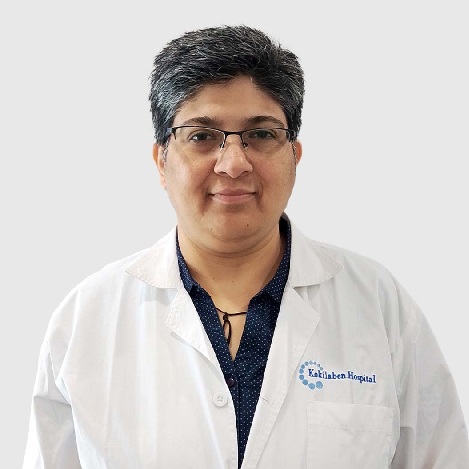For those wondering how is acute lymphocytic leukaemia treated, there are several methods for the same. Treatment aims to induce remission, eliminate leukaemia cells, prevent relapse, and improve long-term survival. Generally, the treatment for ALL is divided into four phases, which are as follows:
Induction Therapy: The primary goal of induction therapy is to induce remission by rapidly reducing the number of leukaemia cells in the blood and bone marrow. It also involves restoring normal blood cell production. The treatment takes place for around four to six weeks.
Consolidation Therapy: Once remission is achieved, consolidation therapy is initiated to eliminate any remaining leukaemia cells in the body. It involves staying in the hospital for several months while the patients receive weekly chemotherapy.
Maintenance Therapy: The third phase of treatment is typically administered to help maintain remission and prevent relapse. It involves lower doses of treatments over a more extended period, usually two to three years.
Preventive Treatments for the Spinal Cord: During each treatment phase, ALL patients may receive additional treatments to kill cancer cells in their central nervous system. This may include injecting chemotherapy drugs directly into the cerebrospinal fluid.
Treatment options for acute lymphocytic leukaemia may include:
Chemotherapy: Doctors use chemotherapy as the primary treatment for ALL. Chemotherapy uses drugs to kill cancer cells. The drug of choice for acute lymphocytic leukaemia typically includes vincristine, prednisone, doxorubicin, etc.
Chemotherapy for acute lymphocytic leukaemia is used as induction therapy for children and adults. However, it can also be used in the consolidation and maintenance phases of the treatment. The treatment goal is to put the disease into complete remission.
Targeted Therapy: Targeted drug treatment selectively targets specific genetic abnormalities in leukaemia cells. By blocking these abnormalities, targeted therapy causes cancer cells to die. Targeted therapy can be used alone or with chemotherapy in induction, consolidation, and maintenance phases.
Doctors use tyrosine kinase inhibitors (TKI) like imatinib and dasatinib to treat children and adults with Philadelphia chromosomes (a specific mutation that forms when chromosomes 9 and 22 break and exchange parts).
Immunotherapy: These drugs boost an individual’s immune system to kill or slow down the cancerous cells’ growth. Immunotherapy for ALL may include monoclonal antibodies such as blinatumomab and inotuzumab ozogamicin. The FDA has also approved CAR T-cell therapy that uses patients’ own immune cells to treat cancer.
Radiation Therapy: It uses high-energy beams to target and kill cancer cells. Radiation may be employed in specific situations, such as to treat leukaemia cells that have spread to the central nervous system. The therapy is also recommended to treat recurrent ALL or cancer that has not responded to chemotherapy.
Bone Marrow Transplant: Also known as stem cell transplant, a bone marrow transplant may be recommended as a consolidation therapy or to treat ALL relapses. The procedure involves replacing diseased bone marrow with healthy stem cells from a donor (allogeneic transplant). Before a transplant, individuals receive high doses of chemotherapy or radiation to destroy leukaemia cells-producing bone marrow.
Supportive Care: Supportive care plays a crucial role in ALL treatment when treatment to cure leukaemia becomes unlikely. Also known as palliative treatment, it includes managing side effects, preventing complications, and supporting the patient’s well-being. This may include medications to manage pain, nausea and other symptoms and antibiotics to prevent infections.
Please Note: The selection of the treatment approach is based on the patient’s health condition and the treating doctor’s opinion.
Cost of the Acute Lymphocytic Leukaemia Treatment
The cost of the acute lymphocytic leukaemia in India vary on several factors including the stage of the cancer, the type of the cancer, treatment modality, hospital type and location, patient’s age, patient’s comorbidities, insurance coverage and much more.
To know the exact cost of the acute lymphocytic leukaemia in India, one must consult their healthcare provider. However, the table below also provides the approximate cost of various treatment modalities for acute lymphocytic leukaemia.
Surgery Name | Surgery Cost |
Chemotherapy | ₹ 75,000 to ₹ 2,50,000
|
Radiation Therapy | ₹ 60,000 to ₹ 2,00,000 |
Immunotherapy | ₹ 80,000 to ₹ 2,25,000 |
Targeted Therapy | ₹ 80,000 to ₹ 2,25,000 |
Bone Marrow Transplant | ₹ 15,00,000 to ₹ 27,00,000 |
Acute Lymphocytic Leukaemia Prognosis
The prognosis is the outcome that an individual may expect after treatment. Generally, the prognosis for ALL has significantly improved over the years, particularly for childhood acute lymphocytic leukaemia. The disease often goes into complete remission after treatment with chemotherapy drugs to kill cancer cells. However, the prognosis for adults with ALL is typically less favourable than children’s.
Acute lymphocytic leukaemia prognosis can vary depending on factors such as age, subtype of ALL, presence of specific genetic abnormalities, and response to treatment. Criteria for a good prognosis include:
Age below 30 years
White blood cell count less than 30,000
No abnormal cytogenetics (chromosomal abnormalities)
Complete remission within four weeks
Acute Lymphocytic Leukaemia Survival Rates
Acute lymphocytic leukaemia survival rates vary based on the patient’s age. It is important to note that survival rates are statistical averages based on past data. It cannot predict the outcome for an individual patient. Acute lymphocytic leukaemia statistics for survival rates are as follows:
The five-year survival rate for children aged 14 or below is 90%.
The five-year survival rate for children between 15 to 19 is 70%.
The five-year survival rate for individuals aged 20 and above is 30%.



























